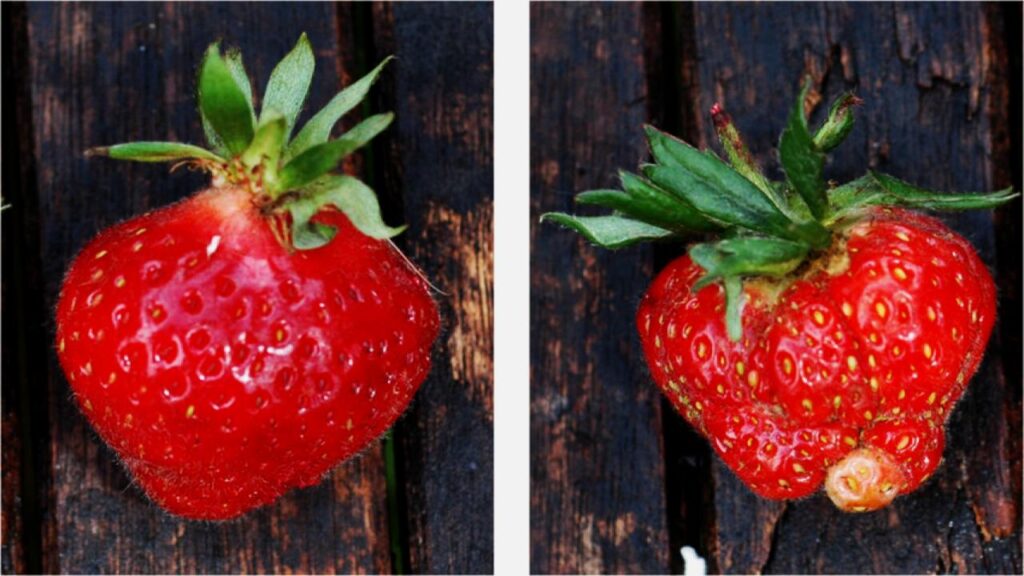If you think growing strawberries indoors is just for fancy greenhouses or gardening nerds, think again. With the right setup, even a studio apartment can be your personal berry patch. Yep, you can grow strawberries indoors year-round—no garden, no problem.

Let’s break it down into simple steps so you can enjoy fresh, juicy strawberries straight from your living room.
Choosing the Right Strawberry Varieties
When it comes to indoor gardening, not all strawberries are created equal. You’ll want to stick with day-neutral or everbearing varieties. These bad boys don’t care how long the day is; they just keep blooming and fruiting like champs.
Top picks for indoor growers:
- Seascape – Bold flavor, fast grower.
- Albion – Big, sweet berries. Disease-resistant.
- Florida Beauty – Thrives indoors with great yields.
Setting Up Your Indoor Strawberry Garden
Containers
Pick pots that are at least 8 inches deep with drainage holes. For multiple plants, go with something 12 inches wide. Want to save space? Hanging baskets, window boxes, or vertical planters will do the trick.
Soil
Use a well-draining, nutrient-rich potting mix. Add compost or worm castings to give your berries a nutrient boost.
Light
Strawberries need their daily dose of sunshine. If you don’t get enough natural light, don’t sweat it. Just grab a full-spectrum LED grow light and run it for 12–16 hours a day. Keep the light about 6 inches above your plants.
Temperature and Humidity
Keep it cozy: 68–75°F during the day, a bit cooler at night. And don’t let your setup get too stuffy—ventilation matters to keep mold away.
Airflow and Pest Management
Good airflow prevents mildew and keeps pests like spider mites and aphids in check. Use a small oscillating fan to circulate air. For pests, consider neem oil spray or insecticidal soap, both of which are indoor-plant safe.
Hydroponic Options
Feeling high-tech? Hydroponic systems like NFT (Nutrient Film Technique) or Deep Water Culture (DWC) let you grow strawberries without soil—just water and nutrients. These setups take space and a bit of investment but can supercharge your harvests.
Pollination: No Bees, No Problem

Bees aren’t buzzing around your living room, so you’ll need to hand-pollinate your strawberry flowers. Grab a tiny brush or Q-tip and gently transfer pollen from flower to flower every couple of days. It sounds tedious, but it’s oddly satisfying and totally necessary.
Watering & Fertilizing Like a Pro
Watering
Water when the top inch of soil is dry. Do it in the morning, and avoid getting the leaves wet—no one wants fungus ruining the party.
Fertilization
Use a slow-release fertilizer when planting. Then, every 2 to 4 weeks, feed with an organic liquid fertilizer (especially during flowering and fruiting).
Harvesting & Maintenance
When to Harvest
Once your berries turn fully red and ripe, it’s go time. Pick them often—the more you harvest, the more they produce.
Plant Longevity
Indoor strawberry plants keep fruiting for 2–3 years. After that, it’s time to bring in the next generation.
Propagation
Your plants will send out “runners” (baby plants). Snip and pot those up to keep your indoor garden going strong.
Bonus Tips for Bigger Yields
- Rotate pots every few days to ensure even light exposure.
- Use self-watering planters if you travel a lot.
- Apply mulch or coconut coir on top of the soil to retain moisture.
- Prune dead leaves and old flowers to direct energy toward fruiting.
Real-Life Grower Experience
One Reddit gardener shared their success growing Seascape strawberries indoors using a 65W full-spectrum LED inside a grow tent. They pulled in consistent fruit all winter long. If they can do it, so can you.
